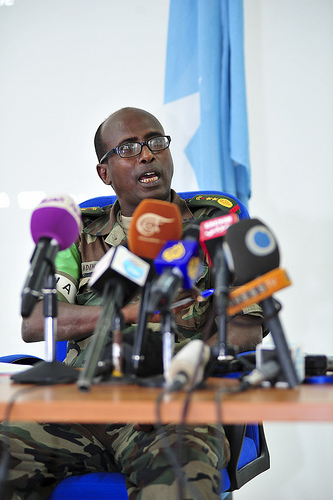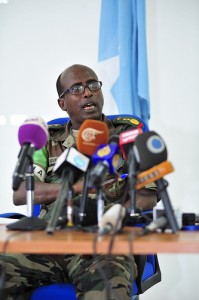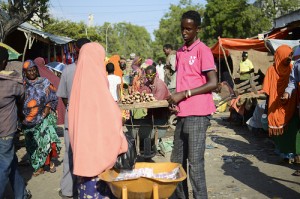
What the Somali Media Needs to Survive
As November comes to a close, no media personnel in Somalia have been killed which marks it out as an unusual month for 2012. International statements of condemnation for the eighteen journalists and media celebrities killed this year have been quick and clear. Yet the reason for this spate of murders remains cloaked in confusion, general hand wringing and quick blaming, but has led to conspicuously little action, at least until now.
Why should the United States care at a time when there are other more apparently important issues higher on the agenda for Somalia? In short, the relative freedom of media to operate goes to the heart of Somalia’s destiny both in terms of whether governance will improve to serve its people and what shapes the future of Somalia’s national culture.
As a vital cog in political debate, the safety of the media is a strong indicator of the health of the state, as they check the power of government and business interests. An active and relatively independent media also provides an important space for public debate and is central to nurturing a sense of shared nationhood, both of which Somalia sorely needs.
With forty-four media practitioners killed since January 2007, and a terrible spike this year, Somalia is the second most dangerous place in the world to be a journalist, after Syria. The death rate is just a small part of a culture of intimidation and censorship, not all of which is apparent. The safety and freedom of journalists in previously stable areas of Puntland and Somaliland appears to be worsening too.
Within the re-energized but contested Somali culture landscape journalists are acutely vulnerable. One of the recent victims was a popular radio comedian, who satirized the Islamist militants. As the hardline militants, many of whom are from foreign cultures, have lost ground in Somalia they are increasingly resorting to tactics of terror and intimidation to force their vision of Somalia’s future on its people, and they know the media represents a powerful channel of influence. Al Shabaab have claimed responsibility for at least ten of the eighteen murders this year.
Perhaps what is most tragic about the recent spate of murders of Somali journalists and media personnel is that isn’t a spate at all; it has become business as usual with reporters seemingly disposable pawns in high-stakes games for prestige, power and money. Owing to low or non-existent salaries for journalists, the corrupting practice of sharuur, looks to be on the increase. This is where reporters are paid to write particular stories on behalf of patrons leaving them vulnerable to attack and acts of revenge.
Yet, not a single attack has led to any investigation or prosecution. Blame appears to be hidden in a complex network of incentives and interests in the business and political world of Somalia. Recent notable attacks as the bombing of a café, which killed three journalists, had all the hallmarks of al Shabaab. But there has been a recent increase in a very different style of attack, often by pairs of gunmen, carrying out well-rehearsed murders on individual media personnel at specific times and places, without any claim of responsibility.
In a recent visit to Mogadishu, Under Secretary of State for Political Affairs, Wendy Sherman, encouraged civil society, of which the media is a part, to hold the government to account. To put a check on the deteriorating situation the United States and others need to revitalize a culture of deterrence and kindle some sense of justice to stem the violence. That is why the African Commission on Rights called on international partners to support the establishment of an independent commission of inquiry.
It would be easy to jump to conclusions and see a Police conspiracy or at least corruption behind the widespread impunity. However, a virtually non-existent level of investigative capacity among the Somali Police may also be to blame. The United Nations Human Rights Council recently required member states to consider how to support the Somali authorities and this might need to include technical assistance to carry out better investigations.
Somalia’s media will probably need to resolve to clean up their act in order for international partners to fully advocate on their behalf. This is about much more than training, ethics committees and regulation. Incentives need to change. Managing Somalia’s dangerous media landscape requires politically strong editors and owners who can lead stronger, better-funded media organizations.
Moves by international partners to better support the media are welcome, as is the President’s task force to investigate the spate of murders. Action will need to be brave and far-reaching, however, to enable the media to make their valuable contribution to Somalia’s future. Currently, there are too few commonly accepted rules of the game by which journalists can safely navigate their profession in Somalia. Until the culture of impunity is forcefully tackled and the industry systematically bolstered reporters will remain vulnerable to the whims of powerful interests.








[…] What the Somali Media Needs to Survive […]
[…] collapse. Recent ASP reports have explored various elements of stability and security from Iran to Somalia to […]